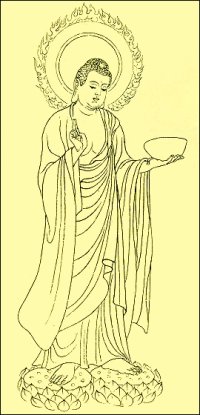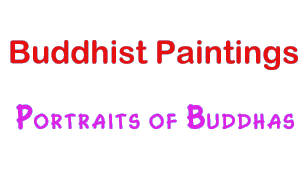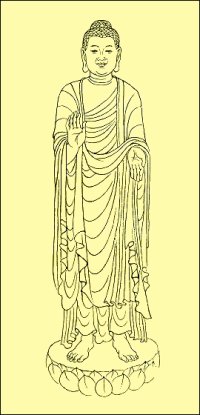


 |
|
 |
|
The most important category of the Buddhist paintings is the portraits of Buddhas. It was noted that during the life of the Shakyamuni Buddha and shortly after his death, the Buddhists did not think that it was appropriate to produce the portrait for the Buddha since the Buddha is a kind of perfection. However, later on during the time of Alexander the Great, the Greek cultural influence spread to India and the Greeks' preference for portraits had an impact on the Indian arts and we started to see portraits of the Buddhas in India. Furthermore, the Buddhists began to believe that other than the living Buddha, there are Buddhas in the other worlds and there will be some other future Buddhas coming to our world, and so were their portraits produced.
Buddhism was introduced to China around 2000 years ago during the Han Dynasty and it was then that the portraits of Buddhas first came to China. Then during the Wei-Jin-South-North Dynasties, the Buddhist arts quickly prospered and quite many great painters such as Gu Kai Zhi and Zhang Seng You put their efforts to combine the Indian and the Chinese traditions in portraits and produced many great portraits for the Buddhas. In the various dynasties afterwards, quite many painters were famous for such paintings too, such as Zhang Shengwen of the Song Dynasty and Ding Guanpeng of the Qing Dynasty. Portraits of Buddhas are predominantly those of Shakyamuni Buddha. But portraits of various other Buddhas are very common too, for example, those of Amitabha Buddha , Bhaisajyaguru (medicine master) Buddha, Burning Lamp Buddha , Aksobhya (A Shan) Buddha, etc.
|